Andrew Douglas
Miscellaneous
A Brief History of Home Consoles
A generation-by-generation overview of some of the most successful home consoles, from the Magnavox Odyssey to the Nintendo Switch 2 (does that even count?)
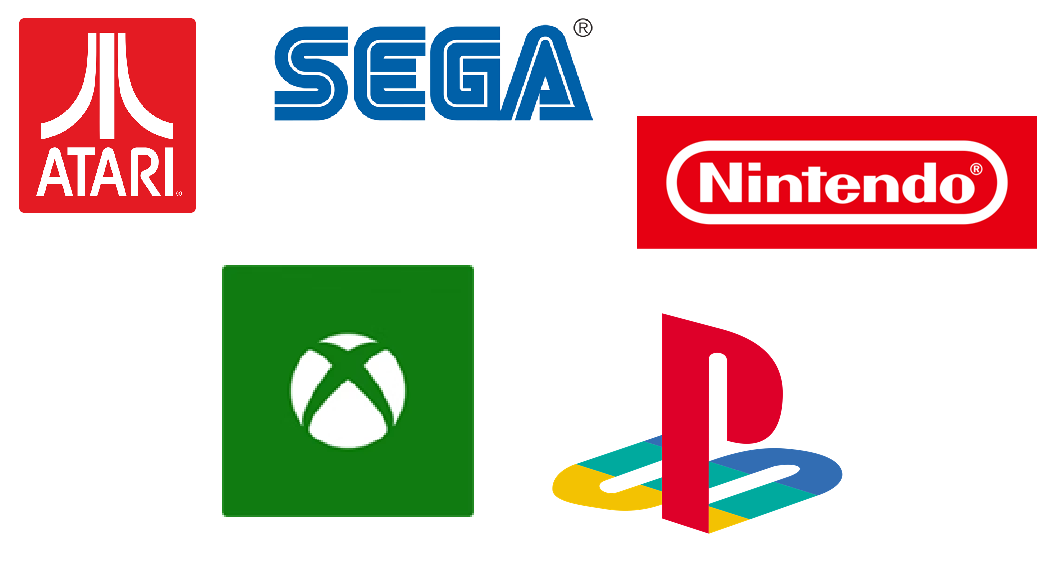
Do you have a favorite game console? Fond memories of sitting in front of your tv for hours on end? Whether you enjoy shooters, platformers, RPG’s, or are a Just Dance fanatic, home consoles are a beloved way to interact with video games in your own home, and are the favorites of many across the globe. Home consoles have come a long way since their inception, with many companies succeeding and failing in the market.
In this article, I will take a look throughout history at some of the most successful (and unsuccessful) home consoles, from a variety of different companies, showcasing how games, controllers, and technology have developed over time.
Let us start from the very beginning, with the Magnavox Odyssey.
First Generation
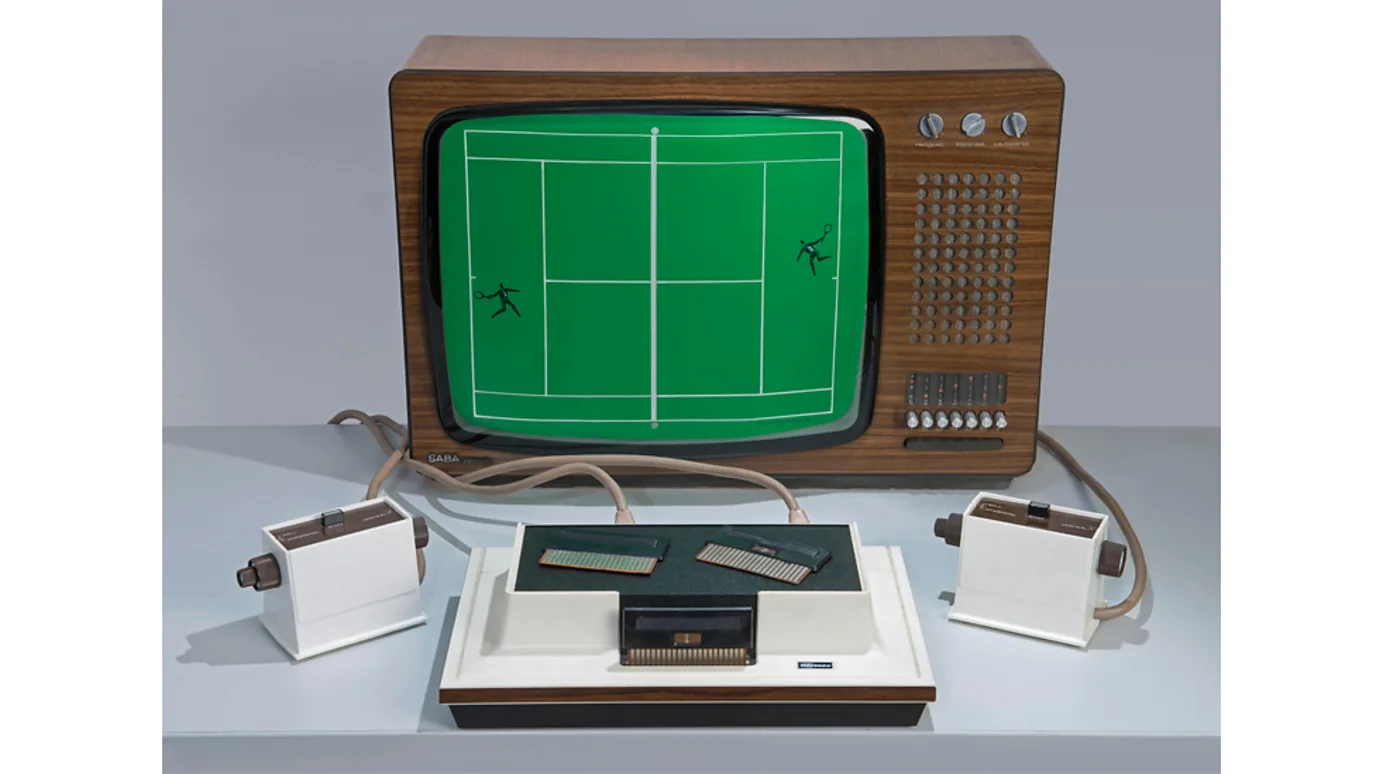
Magnavox Odyssey
While Magnavox made the first game console, the second generation would introduce a new household name: Atari.
Second Generation
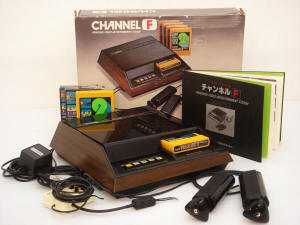
Fairchild Channel F
However, like other game consoles of its time, the Channel F was incredibly expensive. Even worse, the Atari 2600 was released only a year later, which had a similar price point, but offered a lot more.
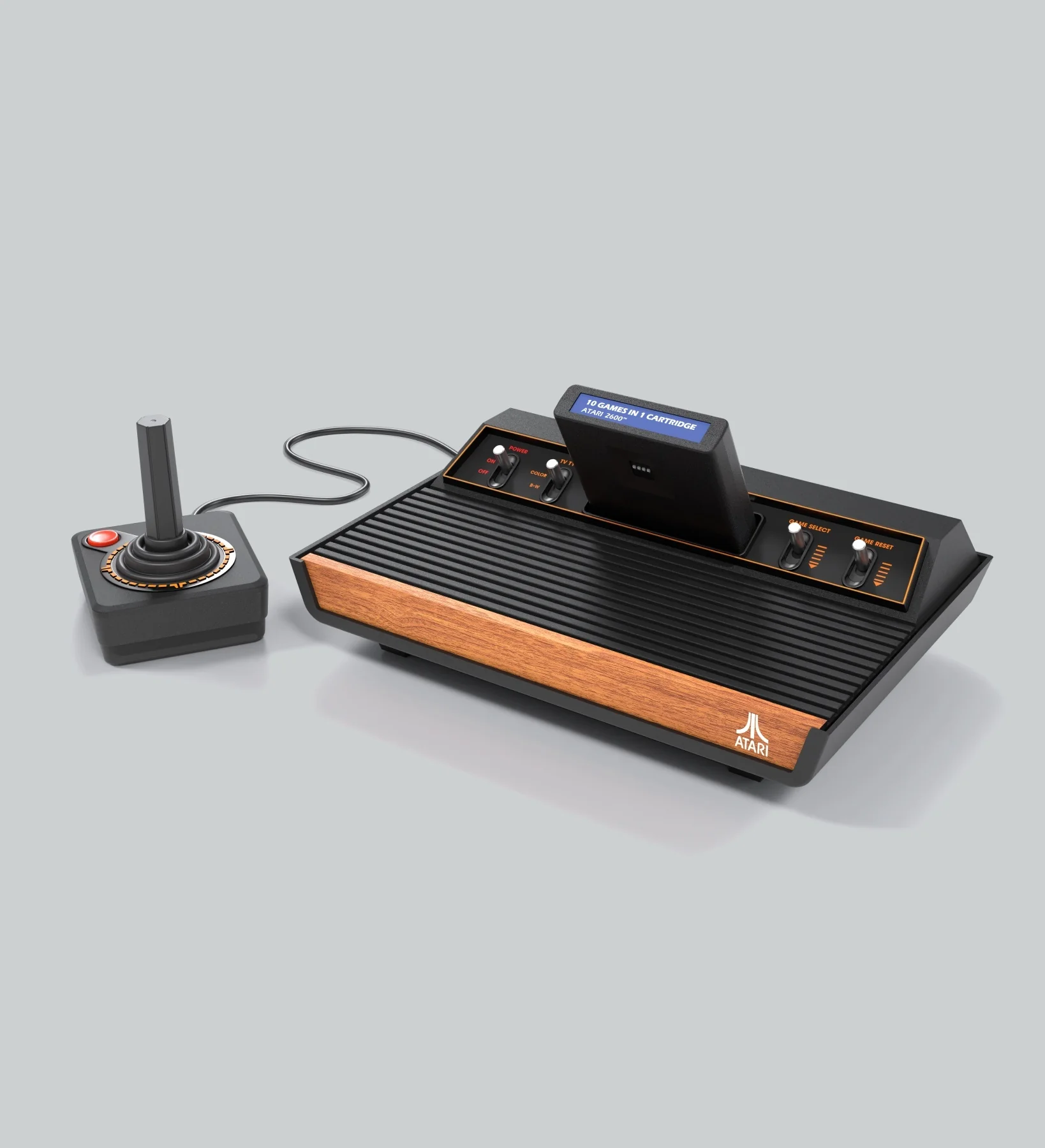
Atari 2600
Unfortunately for everyone who bought the Channel F in 1976, the Atari 2600 was released in September 1977. The 2600 used the same cartridge system as Channel F, so parents could buy extra games for their kids, but the catalog was much more extensive than the Channel F, as Atari licensed third-party development. The 2600 appealed to fans of arcade games and was a way for them to bring the arcade to their home. Atari 2600 games were a lot more exciting, with popular titles like Pac-Man, Space Invaders, and Donkey Kong, as opposed to the Channel F’s math and memory games or digital versions of tabletop games.
Because of its much wider catalog of games and better marketing, the Atari 2600 proved to be the more successful second-generation console. The 2600 sold incredibly well and helped popularize game consoles among consumers, as well as make Atari a household name for entertainment.
Atari’s 2600 helped spark the video game industry, but new faces would emerge and stay in the third generation: Sega and Nintendo.
Third Generation

Atari 7800
Now that consumers were familiar with Atari, and had had miniature arcades in their living rooms for several years, the game console industry was booming, and new companies were trying their hand at electronic home entertainment. In 1986, fans of the 2600 had a wider selection of new consoles, with the Atari 7800 hitting shelves alongside two new names: the Nintendo Entertainment System and the Sega Master System.
Along with new arcade-to-home titles, like Ms. Pac-Man, Centipede, and Galaga, the Atari 7800 was backwards-compatible with all Atari 2600 titles, so consumers who already owned the 2600 had a reason to upgrade. In addition, each game for the 7800 had to be digitally signed by Atari, so third parties could not make their own games. Due to the success of the 2600, other companies had entered the market, and began to sell better than Atari’s consoles, so Atari would slowly fall from their presence in the industry.
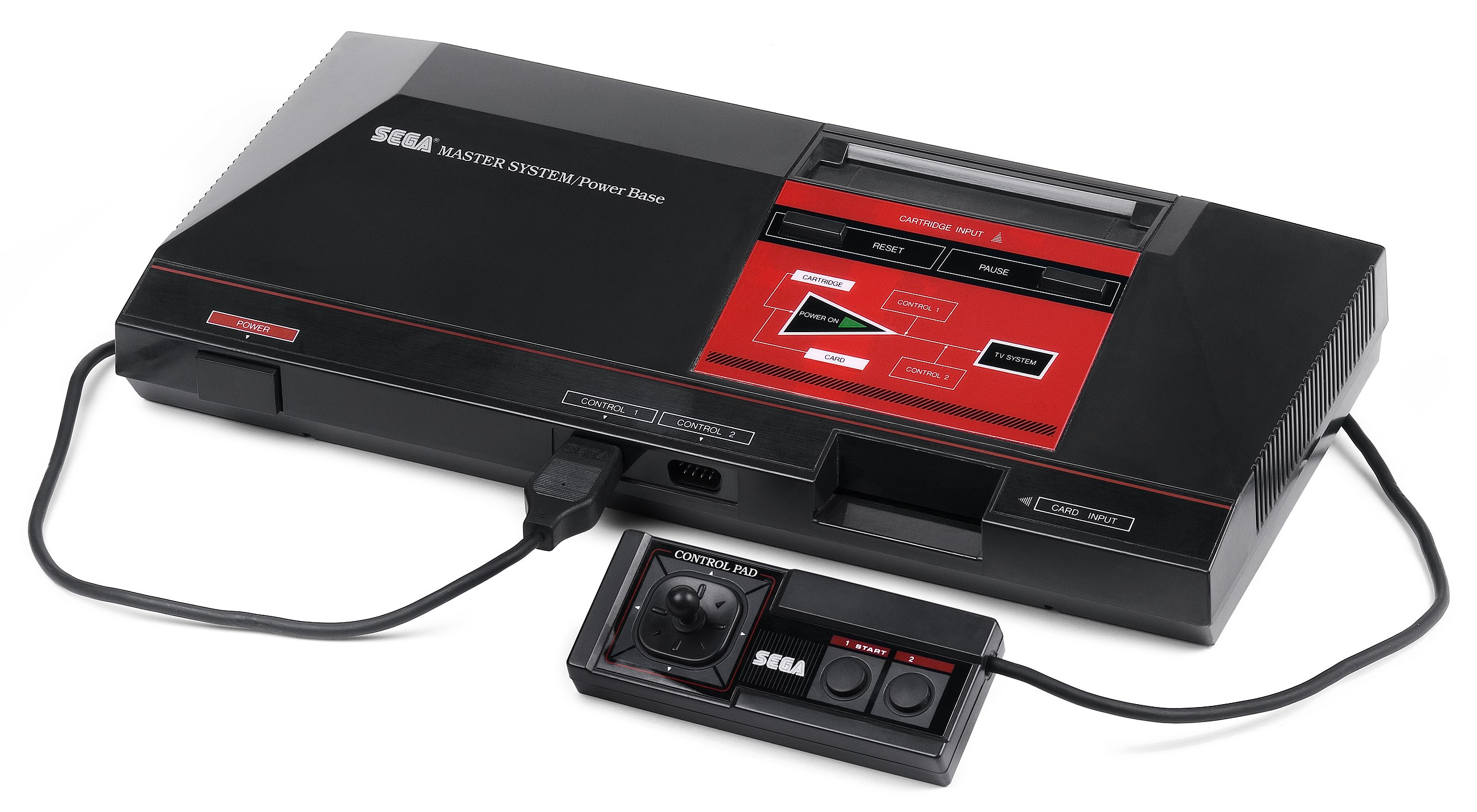
Sega Master System
Originally released in Japan in 1985, the Sega Master System hit North American shelves in September of 1986, perfectly timed to compete with other systems during the holiday season. In addition to cartridges, games for the Master System were released on “Sega Cards”, which held more memory and therefore bigger and more impressive games, with its most successful being Phantasy Star. However, the release of the Master System was overshadowed by the much more popular Nintendo Entertainment System.
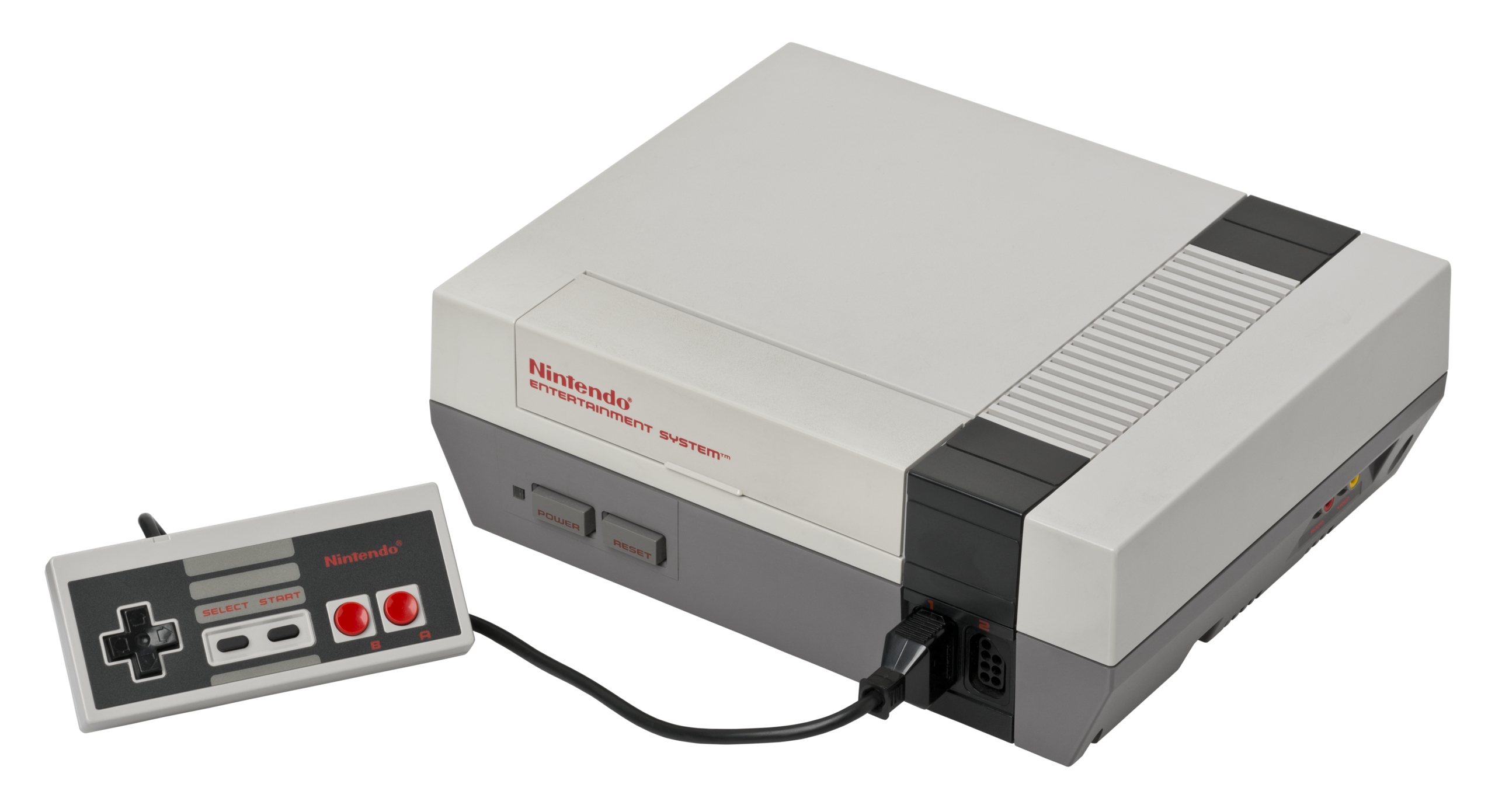
Nintendo Entertainment System
Originally released as the Famicom (Family Computer) in Japan in 1983, the Nintendo Entertainment System was redesigned and fully released in North America in 1986. The NES’s more affordable price was on of its biggest market advantages. In addition, NES cartridges, officially called “Game Paks”, had a uniform design, and Nintendo licensed third-party developers such as Konami, Capcom, and Namco, which were all big names in arcades, to help increase the NES’s collection of games. With big hits such as Super Mario Bros (which came with the console), Tetris, The Legend of Zelda, Metroid, Kirby’s Adventure, Final Fantasy, and Dragon Quest, the NES’s large collection of incredible games was a huge selling point that launched its success like no other game console had before. The video game industry, which had been in a lull since 1983, was revived by the success of the NES and other third-gen consoles, and would continue to succeed going forward.
The success of Sega and Nintendo’s third-gen consoles would launch them to the forefront of the industry, leaving Atari behind.
Fourth Generation
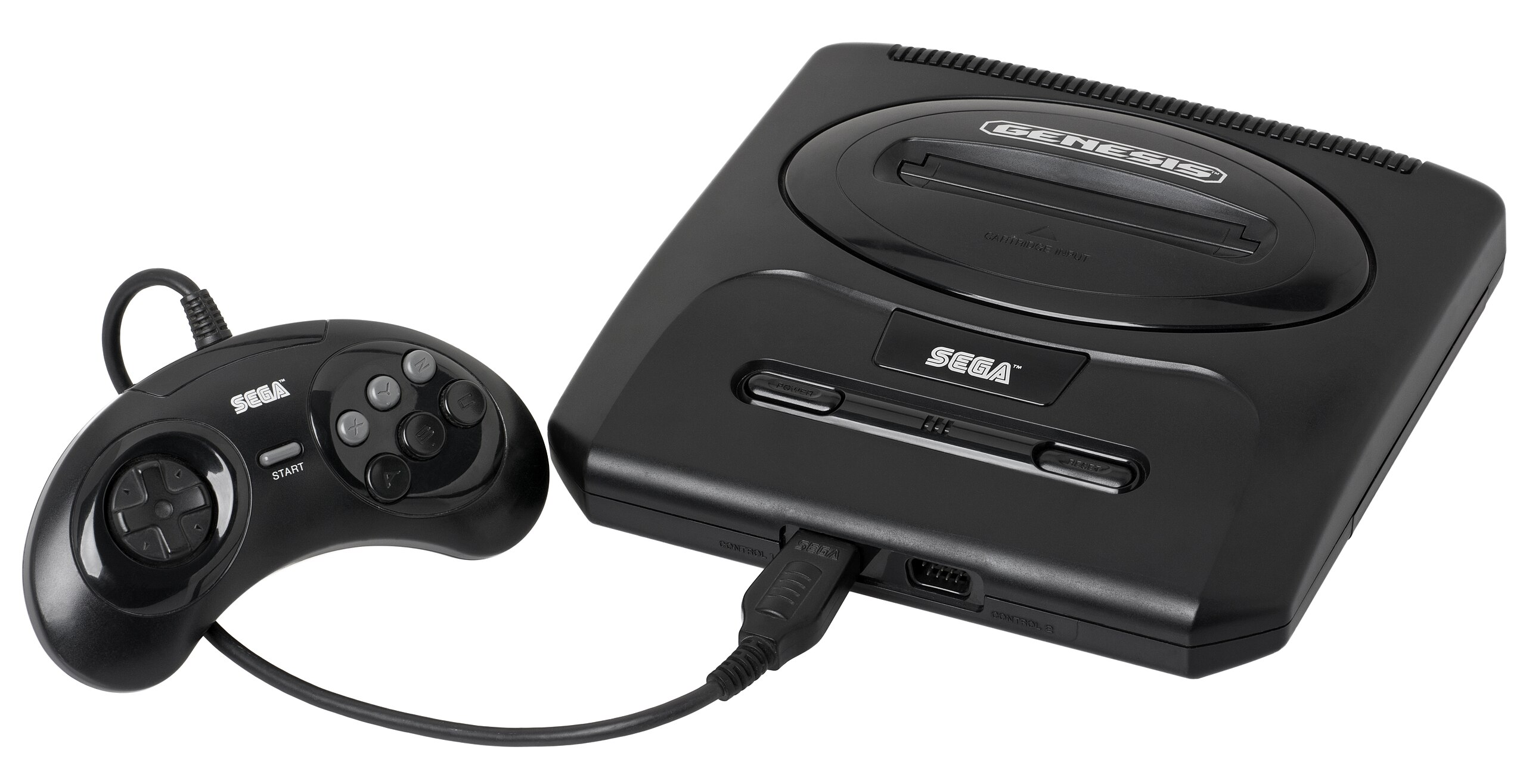
Sega Genesis
After the massive success of the NES, Sega had to step up its game. So, in October of 1988 (1989 in North America), they released the Sega Genesis. The Genesis sported upgraded hardware and could connect to the internet with an add-on. Some relevant titles include Sonic the Hedgehog and Mortal Kombat, but the best of Genesis’s catalog (according to many) were its sports games, such as NBA Jam, NFL ‘98, and NFL Football ‘94. These games helped the Genesis appeal to wider audiences, and it was also backwards-compatible with the Master System for easy upgrading. Many video game fans love the button design of the Genesis controller, which had a unique layout. The Sega Genesis proved to be a fierce competitor to the NES, and would continue to compete with Nintendo’s next system release, the SNES.
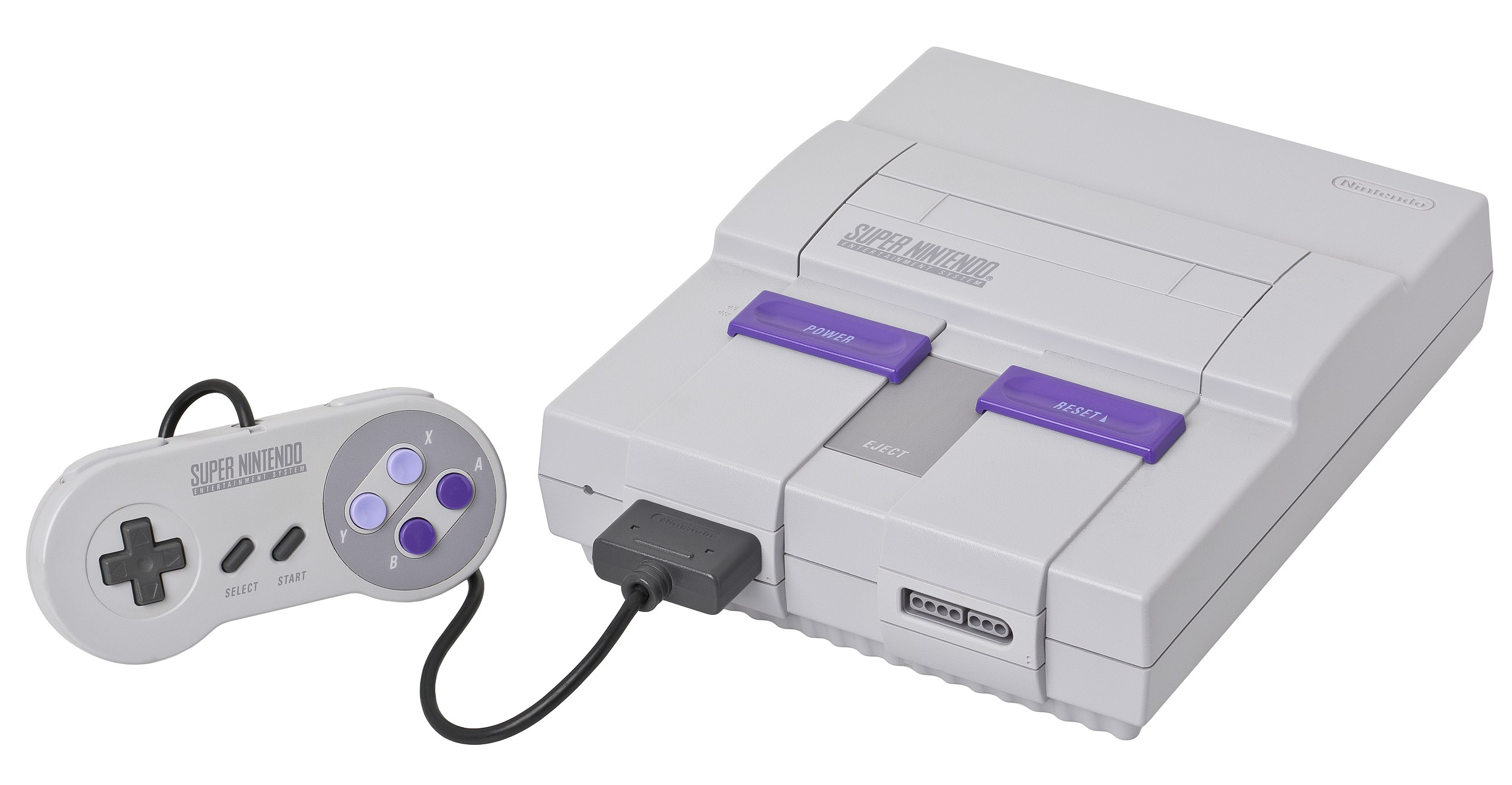
Super Nintendo Entertainment System
In November of 1990, Nintendo released the Super Nintendo Entertainment System in Japan, coming to North America the following year. The SNES was the sequel to the NEs, and sported updated graphics and sound, which were comparable to the Sega Genesis. Compared to NES cartridges, SNES cartridges were more advanced, and could hold bigger games that also ran better. Similarly, the SNES controller was an upgraded NES controller, which rounded the square edges and introduced shoulder buttons. With big hits such as Super Mario World, Super Mario Kart, Donkey Kong Country, The Legend of Zelda: A Link to the Past, Star Fox, Final Fantasy VI, and Dragon Quest VI, the SNES held many sequels to NES games, giving NES owners a reason to upgrade. This console release kept Nintendo’s momentum in the home console market, and alongside the Sega Genesis, video game consoles were a mainstay in American homes. Sega and Nintendo would continue to compete in this market, and soon enough, new names would hit shelves as well.
The fourth generation was a fierce battle between headliners Sega and Nintendo, but the fifth generation would introduce another into the ring: Sony.
Fifth Generation
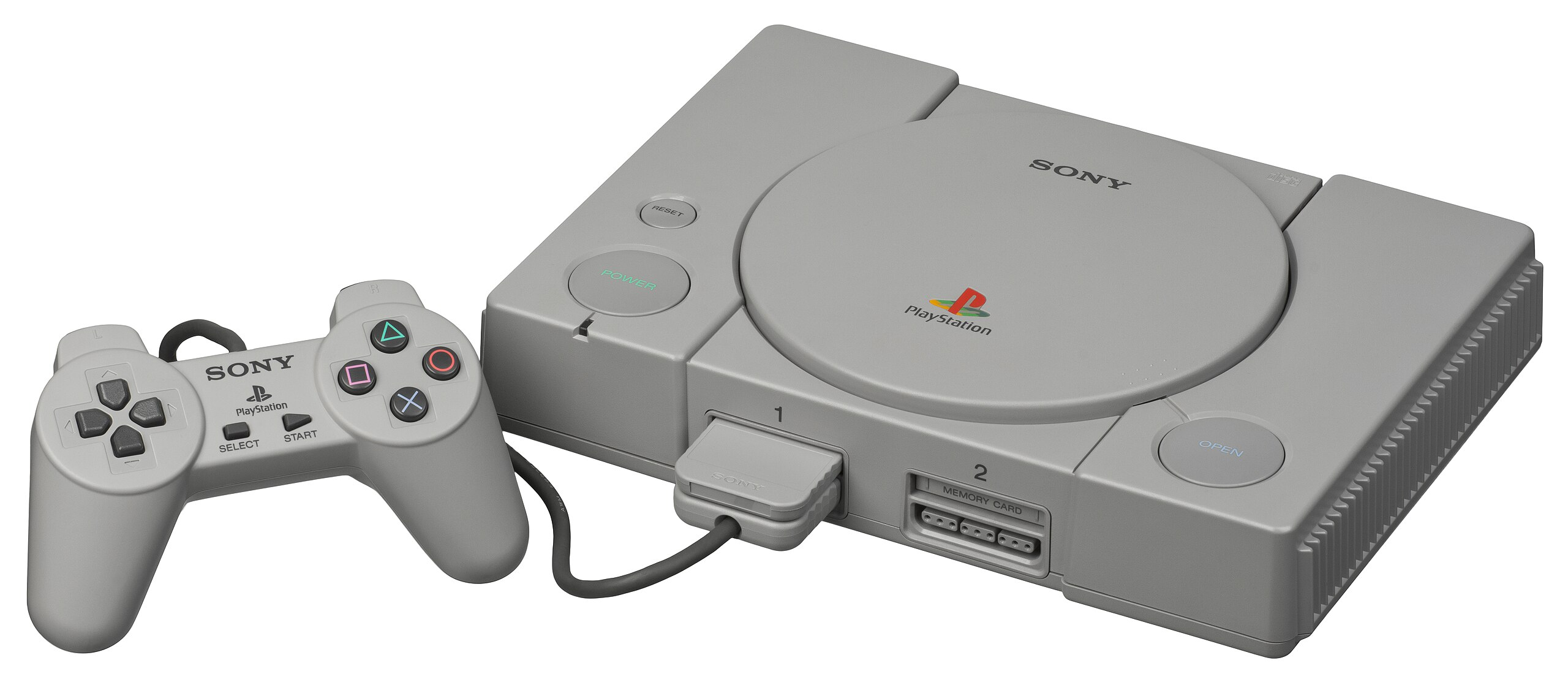
Sony Playstation
On December 3, 1994, Sony entered the home console market with its first release, the Playstation. The Playstation originally started as Sony’s collaboration with Nintendo to make an add-on to the SNES, but after that project failed, Sony decided to design its own console. The Playstation had several advantages over the SNES or the Sega Genesis: it used CD’s instead of cartridges, had advanced 3D graphics, and bigger controllers. The new console also had flashy new games, such as Gran Turismo, Final Fantasy VII, Tekken 3, Tomb Raider, Metal Gear Solid, and the Crash Bandicoot franchise. The Playstation was well-received in Japanese and North American markets, and the power of its hardware especially proved Sony’s new rise into the industry.
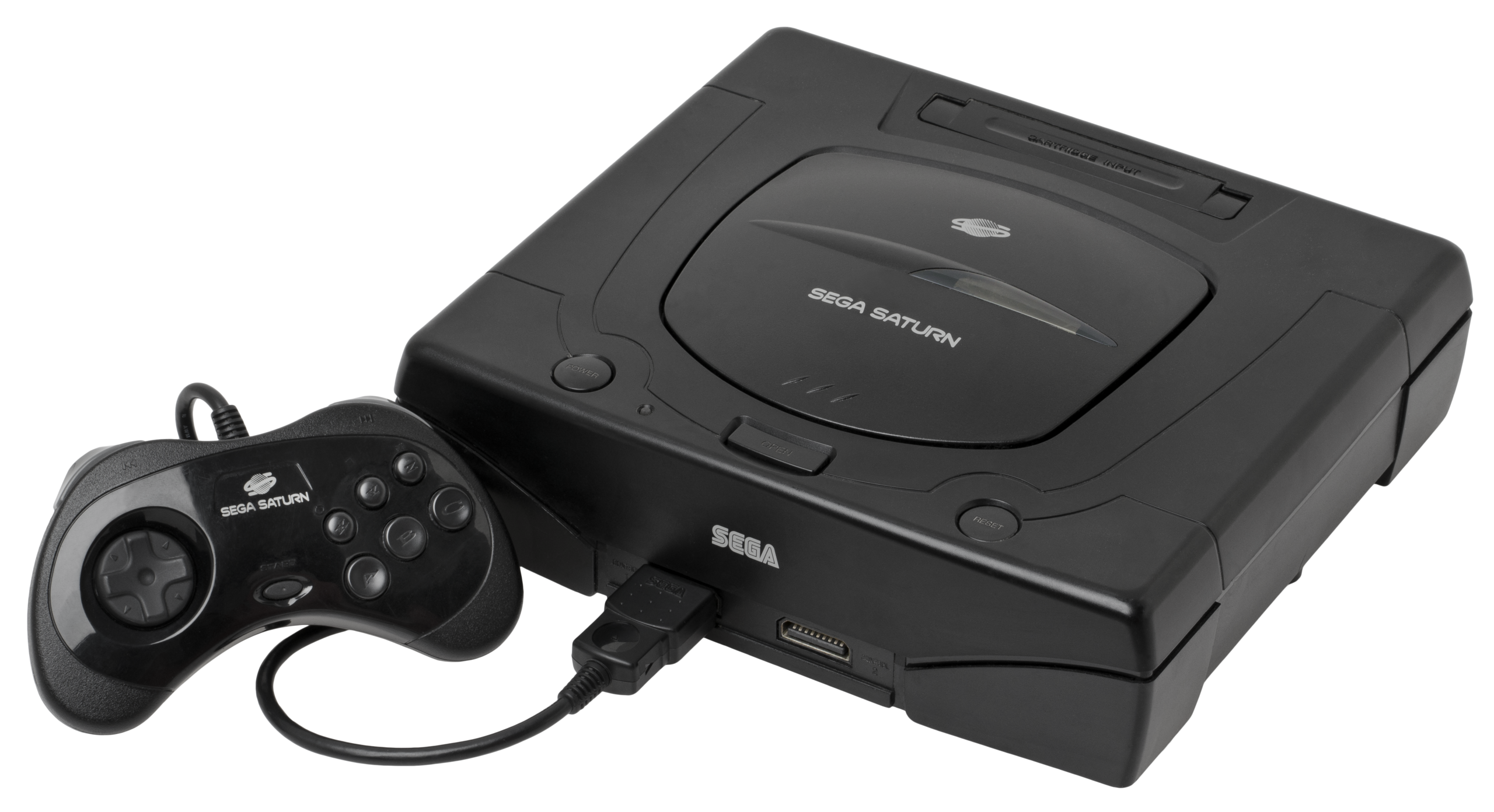
Sega Saturn
However, overshadowed by the Sony Playstation’s big release was the Sega Saturn, which released just a week before, at a higher price point. The Saturn also had a big hardware upgrade and used CD’s, but the console did not match the success of its predecessor, the Genesis, let alone the Playstation or Nintendo’s upcoming Nintendo 64. Even worse, Sonic X-treme, the first 3D release in Sega’s most popular franchise, was cancelled, so previous Sega fans didn’t have a big reason to upgrade. The market failure of the Sega Saturn led to its decline in the industry, and its next home console, the Dreamcast, would be its last.
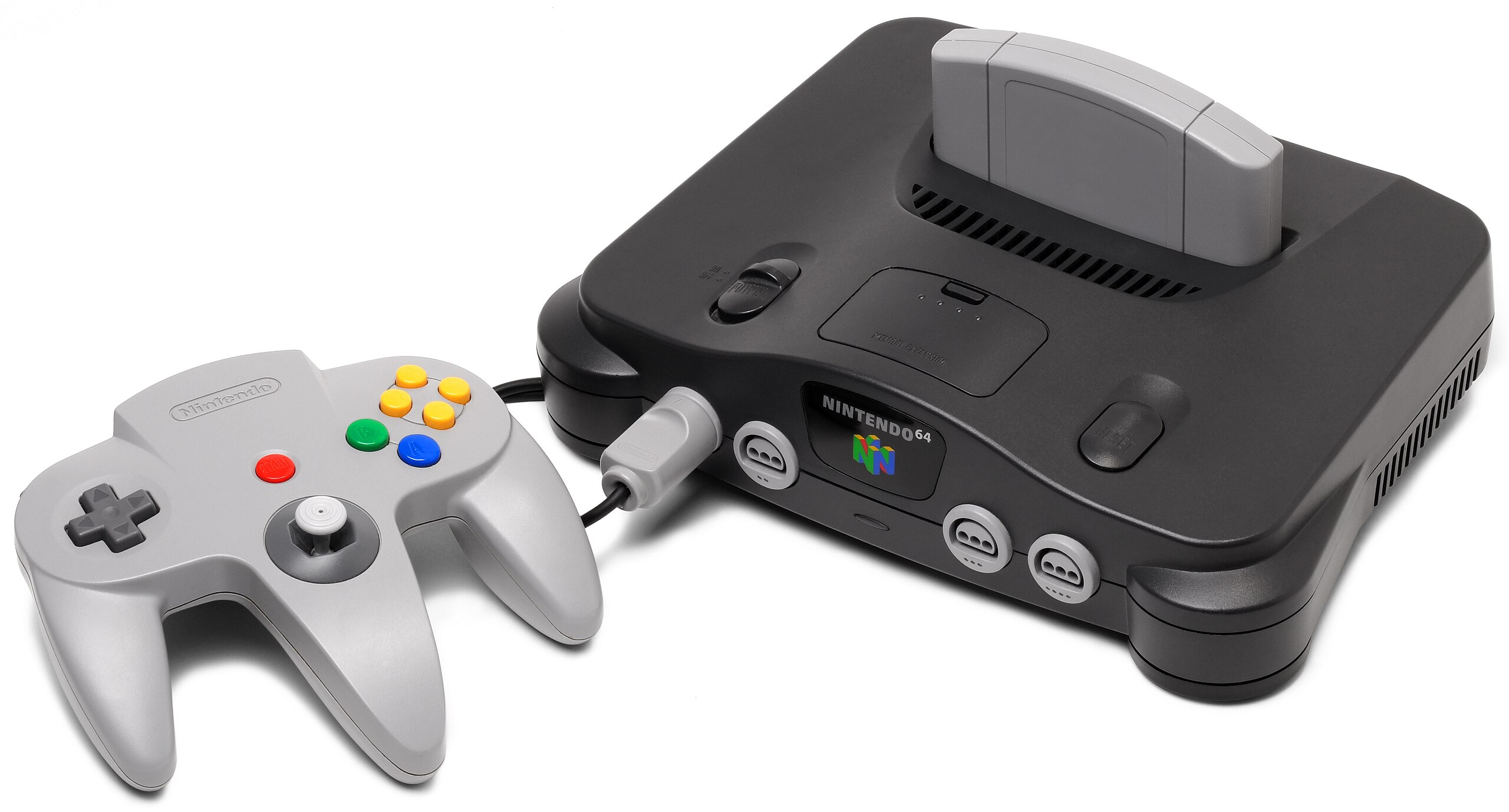
Nintendo 64
A few years after the release of the Sony Playstation and Sega Saturn, the Nintendo 64 hit shelves in June of 1996 in Japan, with the North American release three months later. While it did not use CD’s like other consoles of its generation, the 64 was highly anticipated due to Nintendo’s previous success, and highly competitive, complete with 3D graphics and a competitive price point. While it only had two launch titles- Pilotwings 64 and Super Mario 64, these two games were big hits, and showcased the 64’s 3D capabilities well. With other big hits, such as Mario Kart 64, The Legend of Zelda: Ocarina of Time, Super Smash Bros., Pokemon Stadium, Donkey Kong 64, and Banjo-Kazooie, the 64 was acclaimed by consumers and critics alike. The 64 was especially received as a good first console for children, and introduced many kids into the world of video games, especially several Nintendo titles. A resounding success for Nintendo, the 64 and its interestingly-shaped controller are remembered as one of the most influential game consoles of all time, and would cement Nintendo’s further success in the industry
Sony’s hit success with the Playstation would carry them forward in the industry- while Sega would fall.
Sixth Generation
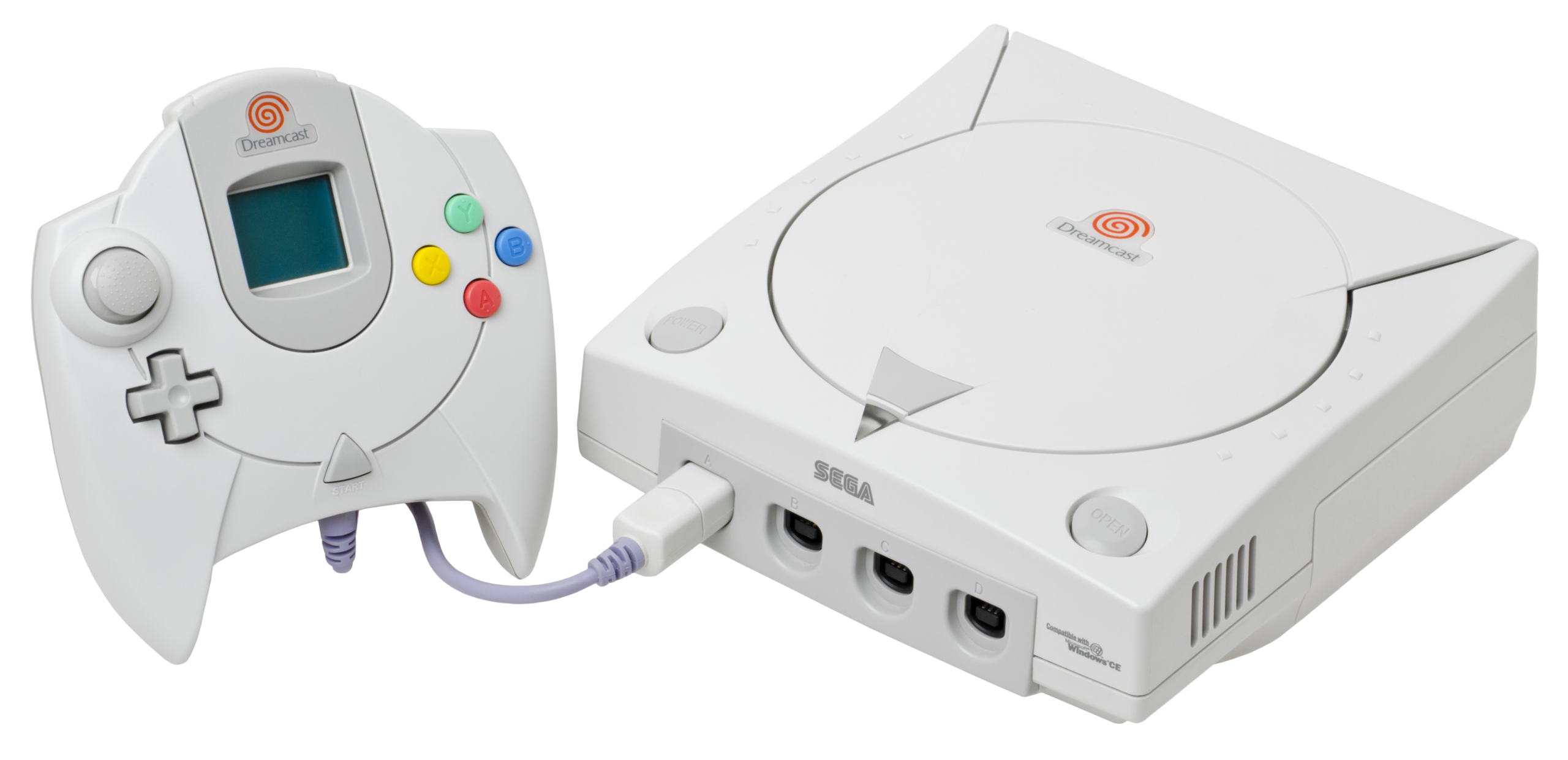
Sega Dreamcast
Due to the unsuccessful Sega Saturn, the success of the Nintendo 64, and the rising popularity of both Sony and now Microsoft within the game industry, the Dreamcast would be the final home console that Sega would release. Released in November of 1998 in Japan (as the Sega Mega Drive), with a North American release the following year, the Dreamcast started the sixth generation of consoles, but would not continue on to following generations. Despite this, the Dreamcast was quite impressive: it was created with a focus on accessibility for developers, and made it easy for ports of beloved games, even arcade games. It was also the first console to have built-in internet connection, so that players could play games online. While the console was quite popular with fans, with popular titles such as Sonic Adventure, Sonic Adventure 2, Soul Caliber, Resident Evil- Code: Veronica, NFL 2K, and Tony Hawk’s Pro Skater 2, the Dreamcast did not do well in markets, struggling with distribution issues, and often being sold a too low a price for Sega to see enough profit. The underwhelming financial release of the Dreamcast did not make up for Sega’s failure of the Saturn, and led to their steady decline within the home-console market. However, because of the Dreamcast’s accessible development environment, it was and is popular with development communities, creating indie online communities and games for the Dreamcast, preserving its legacy.

Nintendo Gamecube
Nintendo’s Gamecube released in September of 2001 in Japan, with a North American release the month later. The Gamecube was not as successful as the 64, but still had a lot of upsides. The Gamecube held updated graphics, and used CD-like optical discs, which put Nintendo more in line with its competitors. The Gamecube also had capabilities to connect to Gameboy Advances (a handheld console), which would allow it to be like a second screen (this trend would continue in Nintendo’s further releases), and could use an adapter to play Game Boy games. The Gamecube was home to many popular games, such as Super Smash Bros. Melee, Mario Kart: Double Dash, Super Mario Sunshine, The Legend of Zelda: The Wind Waker, Luigi’s Mansion, Metroid Prime, Animal Crossing, Paper Mario: The Thousand-Year Door, and Pikmin. However, while it ran on optical disks, it could not play CD’s or DVD’s, like its competitors could, and while it had a solid catalog of Nintendo games, it lacked a lot of third-party support. Because it could not match the power and capabilities of other consoles of its time, such as the incredibly successful Playstation 2 or the new Microsoft console, it did not sell as well as Nintendo expected.
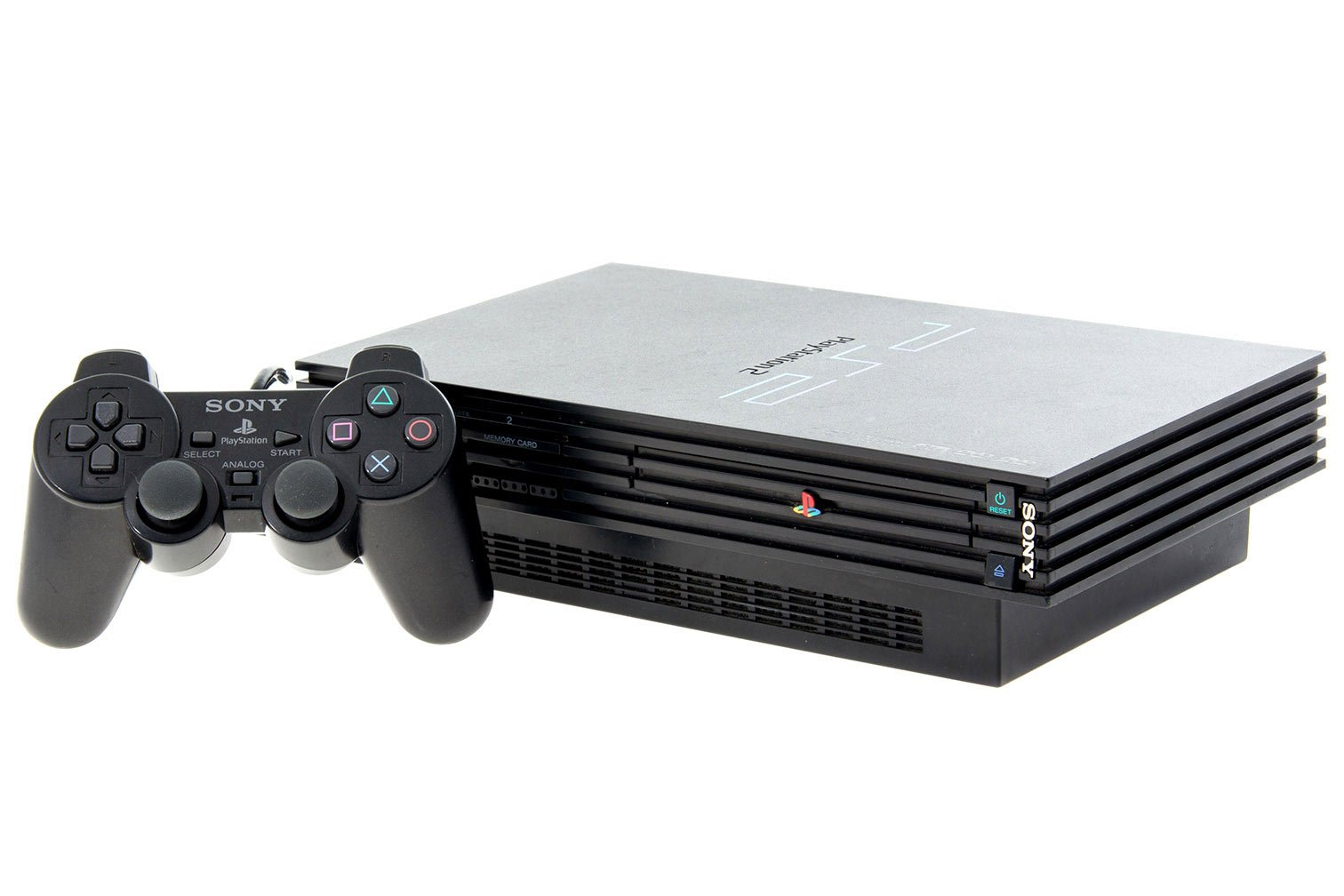
Sony Playstation 2
The Sony Playstation 2 is the best selling video game console of all time. Released in March of 2000 in Japan, with a North American release in October, the Sony Playstation 2 sold nearly three times as well as each of its competitors combined. Riding off the success of the first Playstation, the PS2 was a major upgrade: said to be more powerful than PC’s at the time, and was also backwards compatible with PS1 games and controllers. The PS2 had its own vast catalog of titles, with hits such as Grand Theft Auto: San Andreas, Gran Turismo 3 and 4, Final Fantasy XII, Tekken 5, Kingdom Hearts, God of War, and Metal Gear Solid 2 and 3. At release, and for year after, the Playstation 2 was highly renowned for its incredible power and graphics, as well as its versatility, playing DVD’s, CD’s, PS1 games, as well as its vast catalog of both local and online games. Overall, the Sony Playstation 2 was an incredible success, and was the stand out star of its generation.
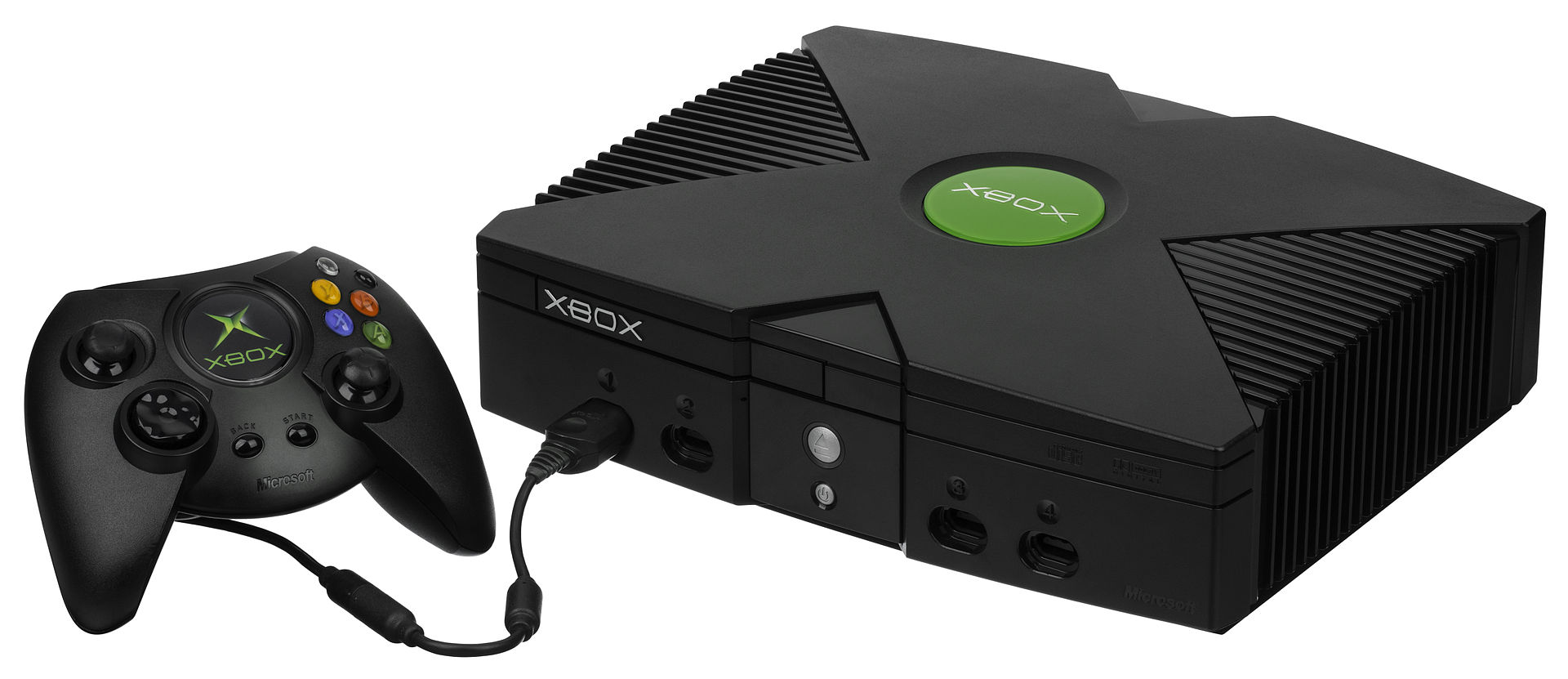
Microsoft Xbox
Even though it was Microsoft’s first attempt at video game consoles, and it had to compete against giants like Nintendo and Sony, especially the insurmountably successful Playstation 2, the Xbox was very successful, and announced Microsoft as a new name in the home console market. Released in North America in November of 2001, and everywhere else in 2002 (an interesting change from other companies, as Microsoft is an American company), the Xbox was immediately competitive with other consoles, with state-of-the-art hardware, internet connectivity, and flashy new online games- all of which Microsoft was familiar with, making personal computers and computer video games. With best-selling titles like Halo, Halo 2, Grand Theft Auto III, Dead or Alive 3, Counter-Strike, Star Wars: Knights of the Old Republic and Battlefront II, and Madden NFL 2005 and 06, the Xbox helped popularize shooters in console gaming. While it did not outsell the PS2, it outsold Sega’s Dreamcast and Nintendo’s Gamecube- showing that Microsoft had what it takes to beat household names, and carrying them forward into further generations.
With Sega out of the market, Nintendo, Sony, and Microsoft would continue to be the three names in video game consoles for years to come.
Seventh Generation
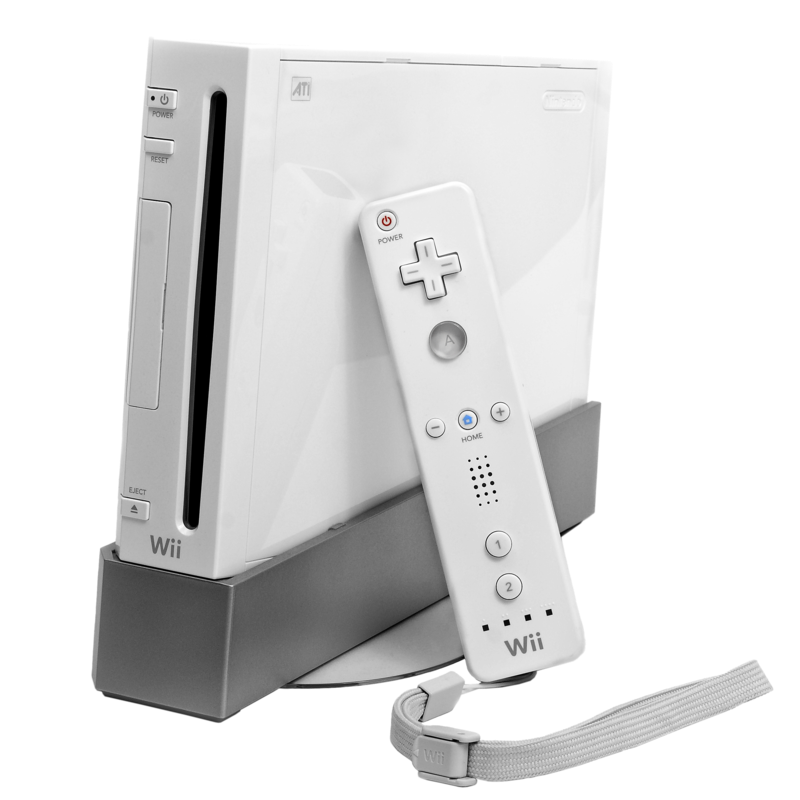
Nintendo Wii
Coming off the decisive sixth generation, with Sony and Microsoft releasing extremely popular, extremely powerful consoles, Nintendo knew they couldn’t compete on that front- so they changed directions. Releasing in November 2006 in North America, and a month later everywhere else, the Nintendo Wii was designed and marketed to a very wide audience, and included a unique control method with its Wii Remote, supporting motion and gesture controls. This intuitive control method made gaming accessible for families, children and adults alike. It was also backwards compatible with Gamecube games- giving hardcore Nintendo fans a reason to upgrade too. As seen with its popular titles, such as Wii Sports (the third best-selling video game of all time), Mario Kart Wii, Wii Sports Resort, New Super Mario Bros. Wii, Wii Fit, Super Smash Bros. Brawl, Super Mario Galaxy, Just Dance 3, and Mario & Sonic at the Olympic Games, Wii games made good use of the unique control capabilities, and helped it stand out within the market. In addition to the Internet capabilities, such as the Wii Shop Channel, the Wii and its games were priced lower than its competitors, making it accessible to consumers. For many reasons, the Wii was an incredibly successful Nintendo console, and going forward, Nintendo would continue to experiment with controls and design innovation, while marketing towards a wide demographic, setting itself apart from Sony and Microsoft, who focused on console power and graphics.

Sony Playstation 3
After their smash hit with the Playstation 2, it was going to be difficult for Sony to improve upon their massive success. However, they made several improvements with the Playstation 3. The PS3, released in November of 2006, had upgraded hardware, and was the first console to use Blu-ray discs, include an HDMI port, and display in 1080p. However, even with all of its potential, the PS3 was released at a very high price, and many did not believe it had enough quality games to upgrade from a PS2. Despite this, the PS3 still had quite a bit of quality games, such as: Grand Theft Auto V (the second best-selling game of all time), Gran Turismo 5, Uncharted 2 and 3, The Last of Us, God of War III, and ?Call of Duty: Modern Warfare 2. Overall, the Playstation 3 was not as successful as the Playstation 2, and was a very powerful and versatile console- especially with its Blu-ray capabilities, but was ultimately hindered by its high price tag. In addition, this console was not a popular with wide audiences as the Wii or the Xbox 360.
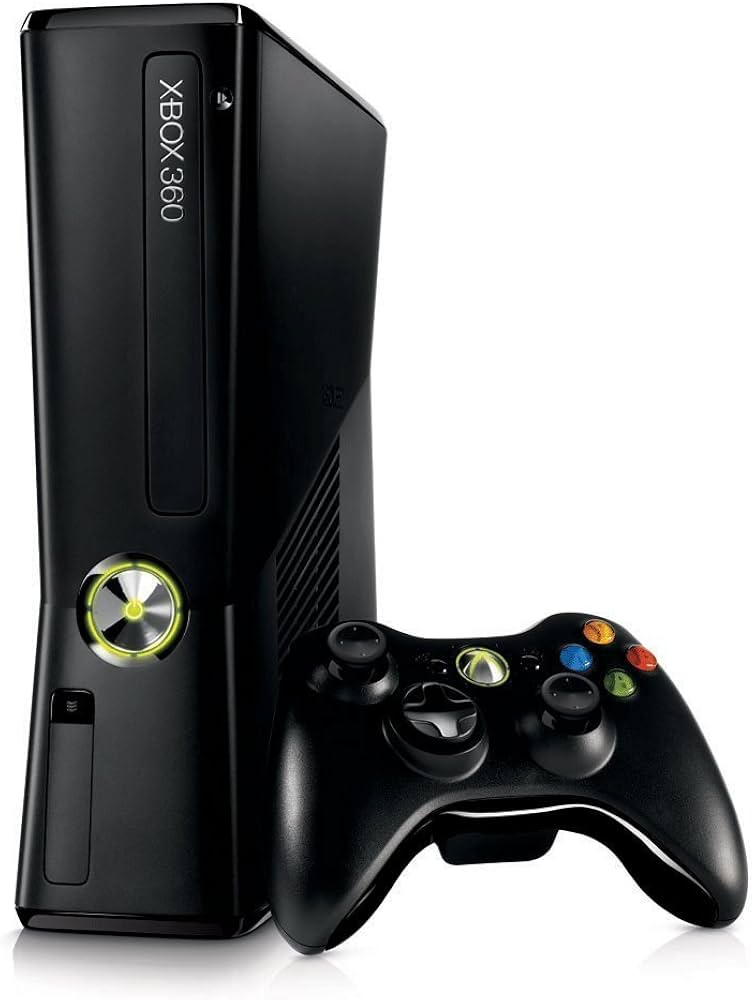
Microsoft Xbox
Released in November of 2005, the Xbox 360 was Microsoft’s follow-up to the Xbox, and sported lots of online innovations with its Xbox Live service. Xbox Live allows players to download and play games online, as well as music, tv, and movies. These features allowed the 360 to be more than just a game console, as consumers could use it as a one-stop machine for home entertainment. Some of the 360’s most popular games include: Grand Theft Auto V, Minecraft: Xbox 360 Edition (Minecraft is the best-selling game of all time), Call of Duty: Modern Warfare 3, Call of Duty: Black Ops, Halo 3, The Elder Scrolls V: Skyrim, and the best-selling 360 game, Kinect Adventures. Kinect was a “controller-free gaming experience”, an add-on for the 360, which used gestures and commands to control the 360’s functions. Similar to the motion-control gimmicks of the Nintendo Wii, Kinect was accessible to non-gamers, and allowed for a wide variety of gaming styles, a complement to the many shooter games that Xbox was known for. Because of this, and in addition to the many entertainment functions of the Xbox 360, this console sold very well, even more than the original Xbox, and continued Microsoft’s success in the home console industry.
With many successes and some rocky failures, the seventh and eighth generations would be pivotal for the big three console companies.
Eighth Generation

Nintendo Wii U
In November of 2012 in North America, December in Japan, Nintendo released the Wii U, a direct successor to the Wii. Continuing their attempts at gaming innovation, as well as their attempts at connecting home and handheld consoles, the Wii U featured the Gamepad, complete with a touch screen and regular controller buttons, which served as a unique and integral part to many Wii U games, as either a supplementary screen or a unique player 1 experience. In addition, the Wii U had HD graphics, and was backwards compatible with Wii games, controllers, and accessories- carrying over the motion and gesture controls popular with Wii games. There was also social online capability, with the Miiverse, where players could interact with other fans of games they played. Some popular Wii U games include: Mario Kart 8, Super Mario 3D World, Super Smash Bros. Wii U, Nintendo Land, Splatoon, Super Mario Maker, and Mario Party 10. However, many of these came too late into the Wii U’s life, and many did not pick up the Wii U on release- content with their Wii, with no real reason to upgrade. Overall, many believed the Wii U did not capitalize on its unique technology, and it was therefore a market failure, especially compared to other consoles of its time.
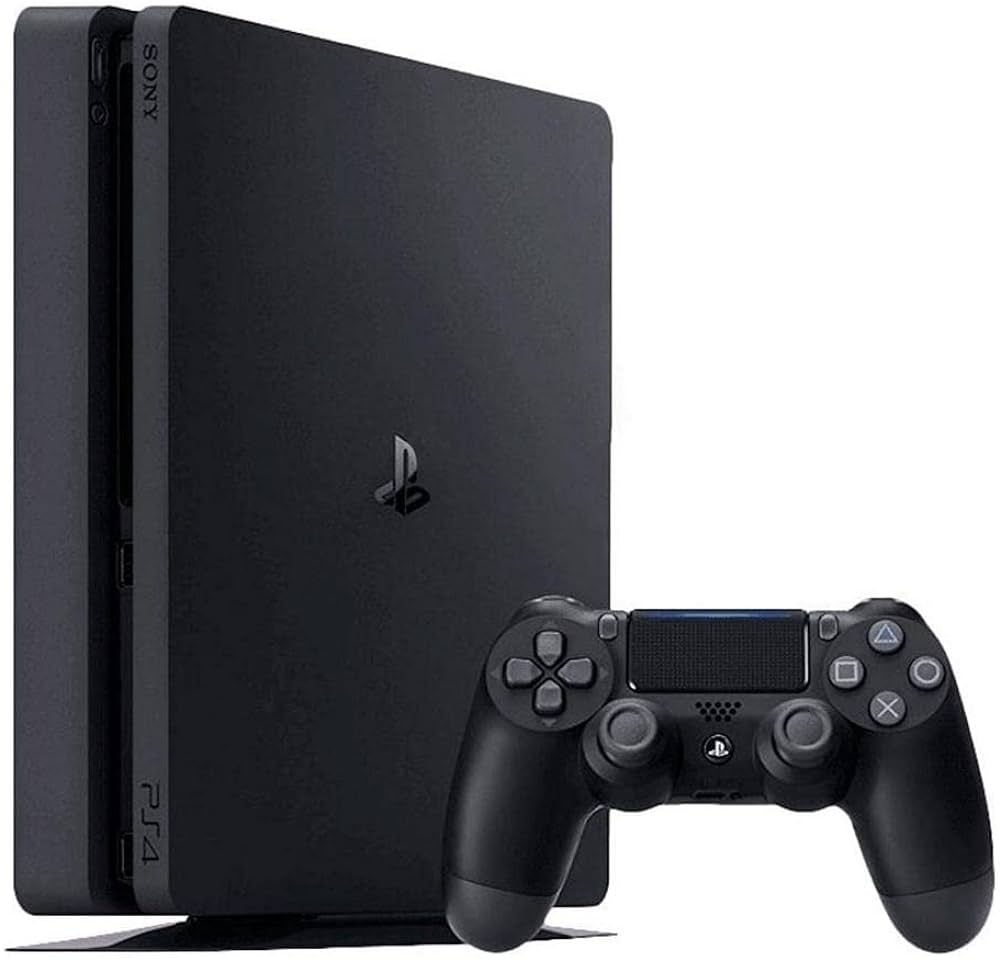
Sony Playstation 4
Continuing Sony’s focus on improved hardware and performance, the Playstation 4, released in November 2013 in North America and February 2014 in Japan, was the most powerful game console to date. But Sony didn’t stop there- the PS4 had a plethora of digital and social features, such as the ability to play games on other devices and stream straight from the console. Many fans also loved the PS4’s embrace of indie games, as the PS4 was more lenient with its license, alongside the many console improvements. Some notable PS4 games include: Marvel’s Spider-Man (a personal favorite), God of War, Uncharted 4, Minecraft, The Witcher 3, The Last of Us Part II, Ghost of Tsushima, Detroit: Become Human, and Star Wars Battlefront. As Sony not only improved its hardware, but listened to its fans and added many features, alongside its impressive catalog of games, the Playstation 4 was a phenomenal success.
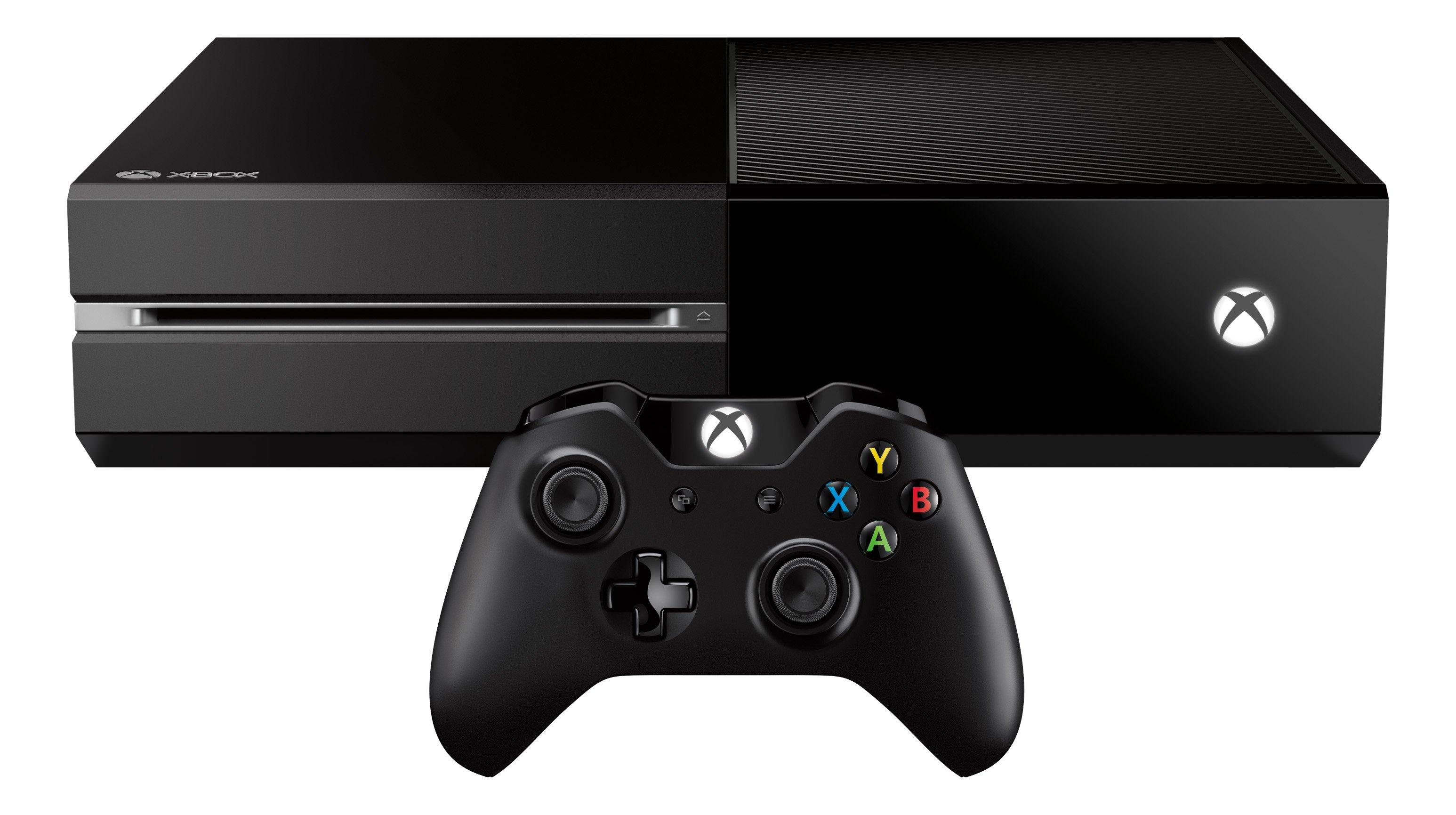
Microsoft Xbox One
Releasing in November 2013 in North America, and September 2014 in Japan, the Microsoft Xbox One further improved on the Xbox 360, with a few improvements in new areas. Like the PS4, the Xbox One could remote play on compatible devices, stream straight from the console, and had many social features that made it very comparable to the PS4. In addition, from their success with the 360, Microsoft improved the Kinect with Kinect 2.0, which was improved for the new console. Some notable Xbox One titles include: PUBG: Battlegrounds, Call of Duty: Black Ops III, Call of Duty: WWII, Call of Duty: Advanced Warfare, Halo 5, Call of Duty: Infinite Warfare, and The Witcher 3. As with previous Xbox consoles, the primary demographic was shooter games. Overall, the Xbox One was quite successful, and praised for its quality and performance.
The eighth generation was a definitive one for Sony and Microsoft, and while Nintendo failed with the Wii U, their next release would be a critical success.
Generation 8.5
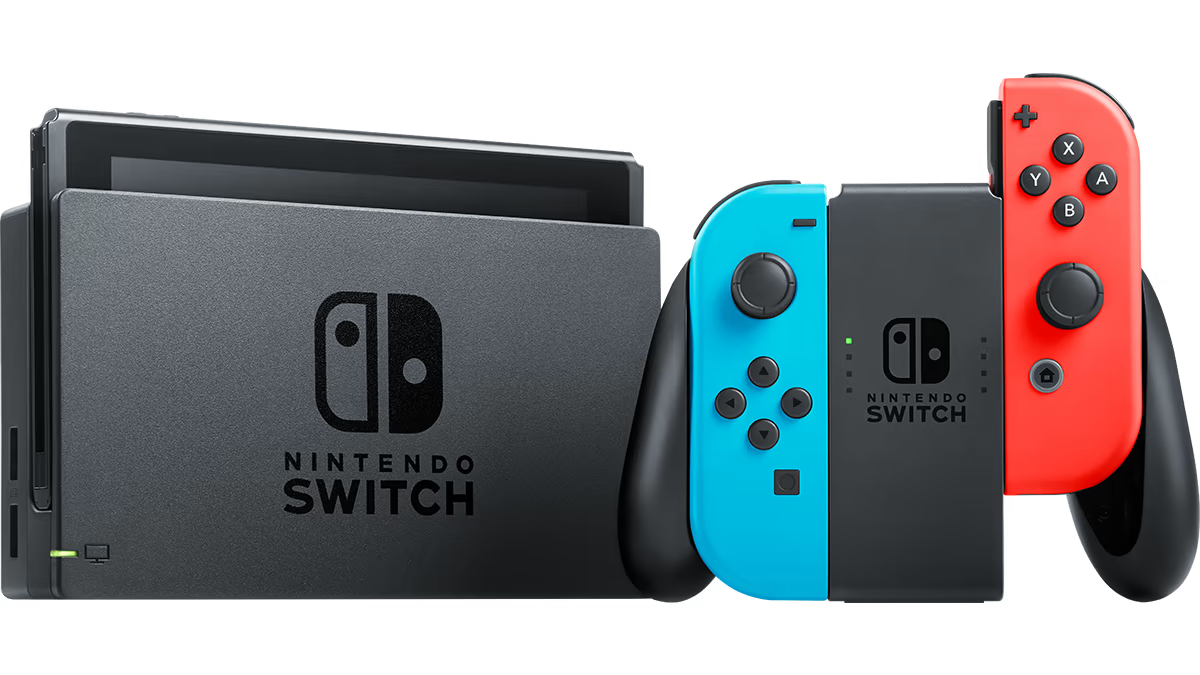
Nintendo Switch
The Nintendo switch is an interesting console. Released in between generations, in March of 2017, it is the third best-selling video game console of all time, and the second best home console. Continuing their trend of blending home consoles with handhelds, using interesting controller methods, and fresh off the market failure of the Wii U, Nintendo hit the ball out of the park with the Switch.
Does the Switch count as a home console? A blend of handheld and home entertainment, players can use the console and Joy-Cons separately, together, or in the dock, which connects to a TV through HDMI. This format allowed Nintendo to consolidate their two big market areas: handheld consoles (like the Gameboy or DS), with the power of their home consoles, creating an incredibly versatile consumer experience.
With big hits, such as Mario Kart 8 Deluxe, Animal Crossing: New Horizons, Super Smash Bros. Ultimate, The Legend of Zelda: Breath of the Wild and Tears of the Kingdom, Super Mario Odyssey, Pokémon Sword, Shield, Scarlet, and Violet, Super Mario Party, and Nintendo Switch Sports (a spiritual successor to Wii Sports), the Switch has a vast catalog of games, with Nintendo titles, third-party titles, and indie titles.
While it was criticized for its lack of games upon launch, as games continue to be published, the longevity of Nintendo’s hit systems shines through the Nintendo Switch. In addition, many criticized the Switch for its low processing power and hardware issues (Joy-Con drift). Despite this, the Switch was a critical success for Nintendo.
The Switch demonstrates Nintendo’s will to do their own thing in the industry. Now back to some more regular releases.
Ninth Generation (Current)
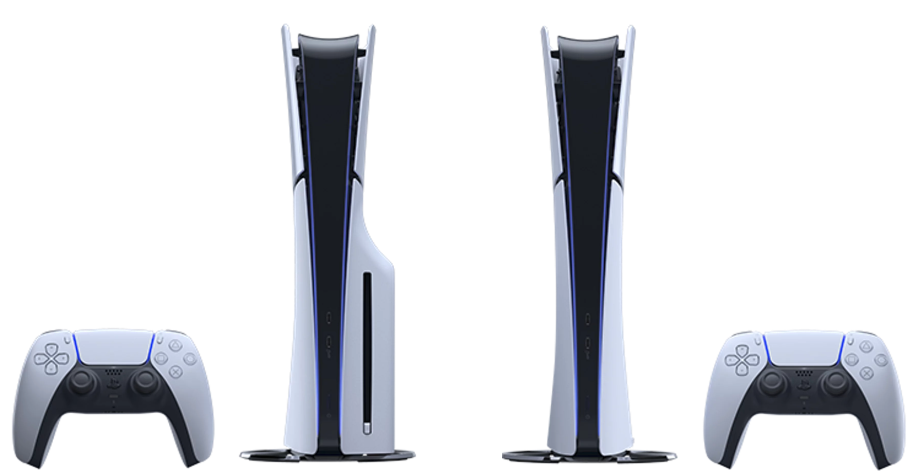
Sony Playstation 5
Sony’s current system, the Playstation 5 released in November of 2020 alongside the Playstation 5 Ditigal Edition. The regular release uses Ultra HD Blu-ray discs, while the digital edition cannot use any disks- instead relying entirely on online downloads. The PS5 includes state of the art hardware for incredible graphic and performance, as well as backwards compatibility with most PS4 games. PS5 DualSense controllers include haptic feedback and adaptive triggers, for some unique control methods. Some notable PS5 games as of writing include: Marvel’s Spider-Man 2, Ratchet & Clank: Rift Apart, Elden Ring, Final Fantasy XVI, and Astro Bot. The PS5 received acclaim at launch, especially for its game catalog and controller capabilities, but its legacy is still being written.

Microsoft Xbox Series X and Series S
Like the dual Playstation 5 release, Microsoft would have a dual release for the Series X and Series S, both released in November 2020. The Series X is higher-end than the Series S, with better graphics and performance, and both are backwards compatible with most Xbox One games. Some notable games include: EA Sports College Football 25, Call of Duty: Black Ops 6, Madden NFL 25, NBA 2K25, Dragon Ball: Sparklng! Zero, and Hogwarts Legacy. Continuing its history, the Xbox Series X and Series S are popular for shooter games. At launch, many criticized the release for not showcasing its capabilities, but as more games come out, the system’s power is being shown, and like the PS5, its legacy is still being written.
The current state of the home console industry is ever-developing, how will these companies continue to innovate going forward?
Future Generations
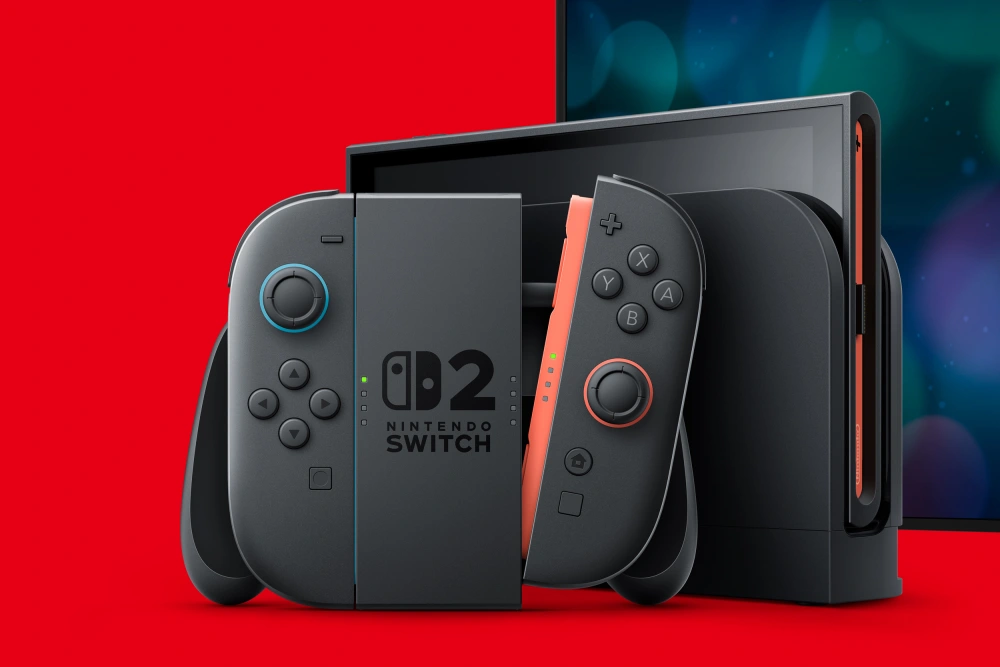
Nintendo Switch 2
Not much is known about the Nintendo Switch 2, which is set to release this year. It seems to be a very direct successor to the Switch, but its power, unique capabilities, and game catalog are unknown. With the massive success of the Switch, Nintendo next steps could carry them forward, or be another failure, and this release will be pivotal for Nintendo’s momentum.
This concludes our brief history.
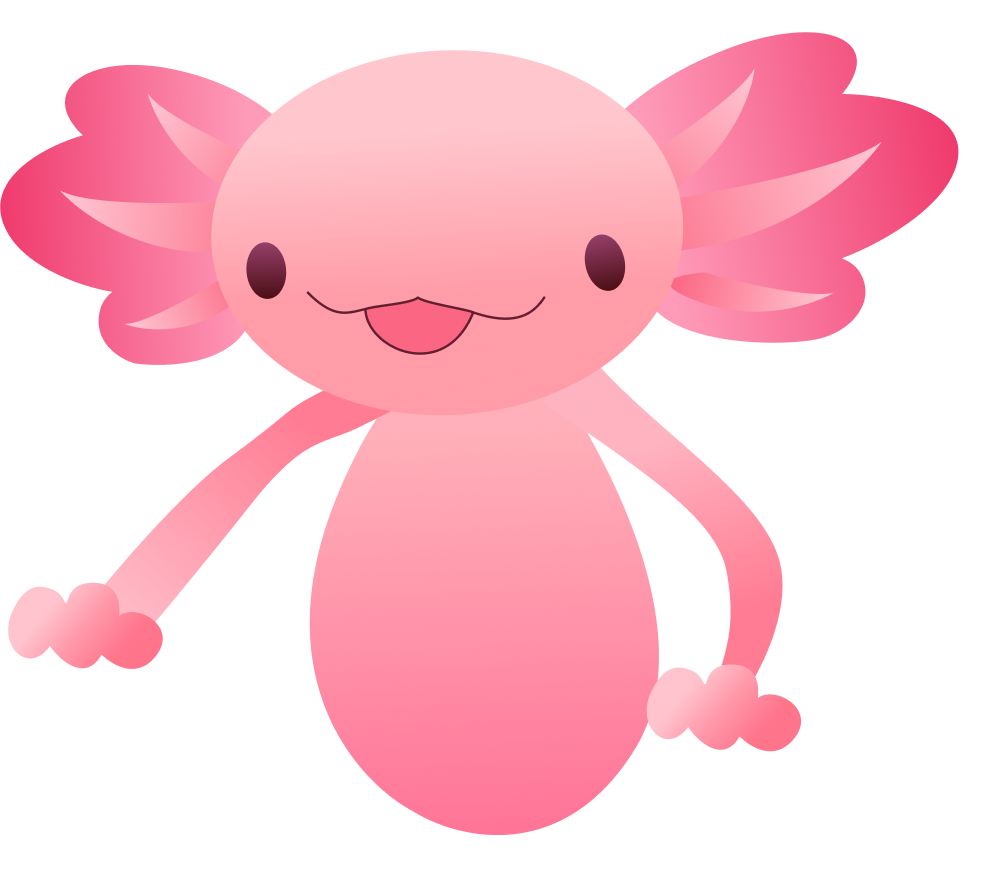
In conclusion, the industry is nowhere near any end, and as shown, many companies have had their ups and downs throughout history. Hopefully this was an interesting read, and a little informative as to how your favorite console got to be where it is now.
Perhaps I will write a brief history of handheld consoles, as well.
Andrew Douglas :3
[Most of this information was taken from Wikipedia (no shame), or from game journalism articles from Forbes, Polygon, and IGN.]
